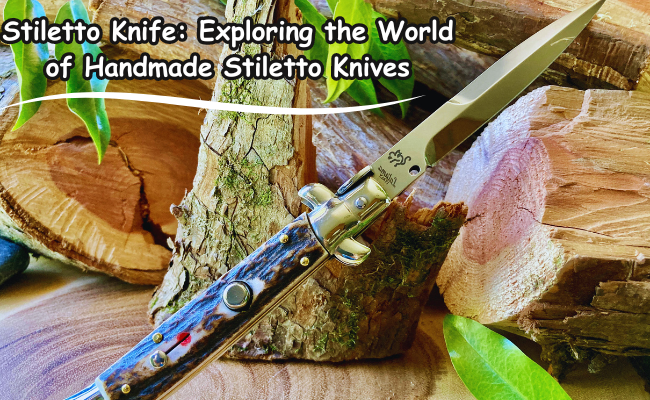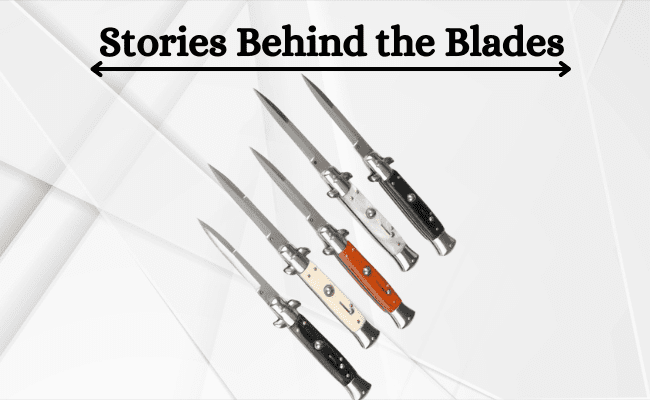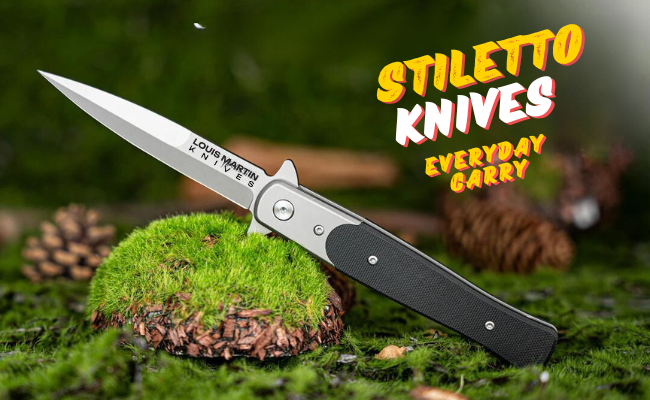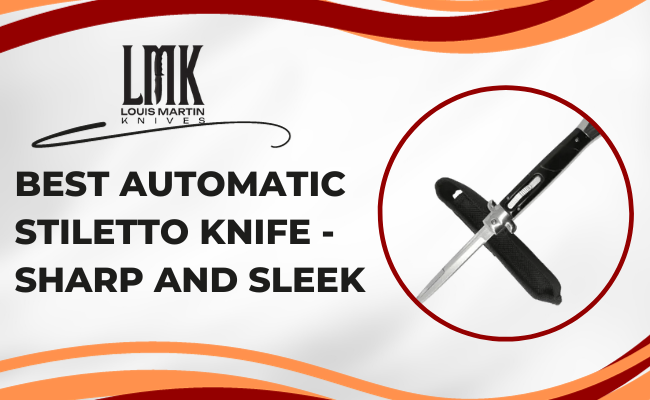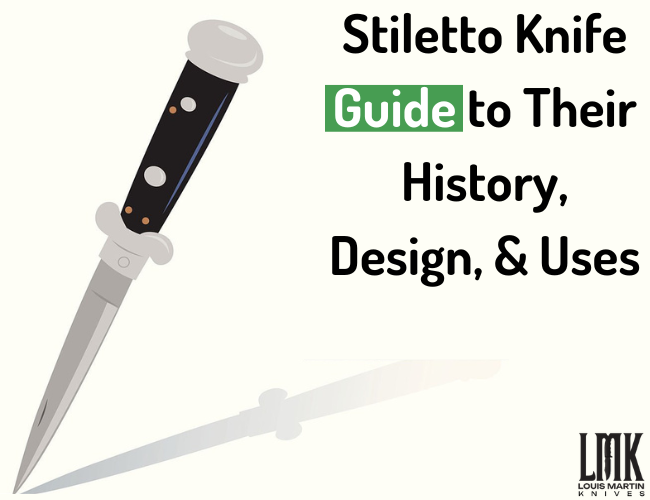The stiletto has long been revered for its lethal efficiency and elegant design. However, beyond its utility as a tool or weapon of handmade knives, the stiletto knife embodies a rich heritage of craftsmanship and artistry that continues to captivate enthusiasts worldwide.
Introduction
Stiletto knives, characterized by their slender blades and needle-like points, hold a significant place in the pantheon of edged weapons. From their origins in ancient history to their modern-day incarnations, these knives have garnered attention for their unique design and functionality.
The handmade stiletto knife industry represents a niche within the broader world of knife-making. While mass-produced versions abound, aficionados and collectors alike seek out the craftsmanship and individuality offered by handmade pieces.
This exploration, titled “Stiletto Stories,” is to delve into the multifaceted world of handmade stiletto knife. From their historical roots to contemporary challenges and innovations, we aim to uncover the stories behind these iconic blades.
History of Stiletto Knives
The origins of stiletto knives can be traced back to ancient civilizations, where similar weapons were used for close combat and self-defense. Over time, these early prototypes evolved into the sleek and lethal blades we recognize today.
Throughout history, stiletto knife have played significant roles in various cultures and conflicts. From Renaissance Italy to World War II, these weapons have left their mark on both battlefields and popular culture. The influence of stiletto knives extends beyond their historical significance, shaping modern knife-making practices and inspiring generations of craftsmen to hone their skills.
Artistry and Craftsmanship
Crafting a handmade stiletto knife requires a delicate balance of traditional techniques and modern innovation. From forging the blade to shaping the handle, artisans employ time-honored methods to create blades of exceptional quality and beauty.
The choice of materials is crucial in the construction of a handmade stiletto knife. While traditionalists may prefer high-carbon steel for its durability and edge retention, contemporary makers often experiment with exotic alloys and handle materials to push the boundaries of design.
Profiles of master artisans offer insights into the diverse styles and approaches to crafting handmade stiletto knife. Whether steeped in tradition or embracing cutting-edge techniques, these craftsmen embody the spirit of creativity and dedication that defines the craft.
A Good Stiletto Knife Comes in Handy when the needs arise
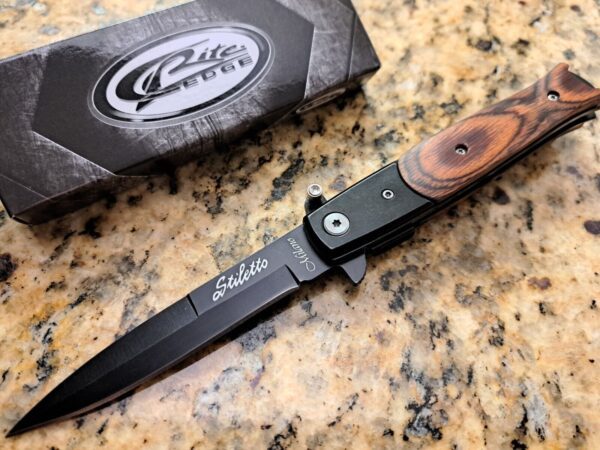
8.5″ Overall Length
(Large Knife)
4″ 1045 Black Surgical Stainless Plain Blade
(The Sharpest Strongest Steel In The Industry)
Stainless Steel Construction Black With Beautiful Wood Handle
(Super Strong & Reliable)
Spring Assisted Opening
(Opens Fast & Smooth)(Visible Functional Thumb Studs)
Liner Lock
(Super Strong & Sturdy)
Highest Quality Stiletto Blade 1045 Surgical Stainless Steel
(The Best Quality Steel)
Design and Functionality
Examining the anatomy of the Best stiletto knife reveals the precision and attention to detail required in its construction. From the slender blade to the ergonomic handle, every design aspect is carefully considered to ensure optimal performance.
Variations in design cater to different purposes and preferences, from tactical models optimized for self-defense to ornate collector’s pieces prized for their aesthetic appeal. Despite these differences, all handmade stiletto knives share a common commitment to excellence in both form and function.
Balancing form with function poses unique challenges for makers of handmade stiletto knives. While aesthetics are important, ergonomic considerations such as grip comfort and blade balance are equally crucial to the knife’s overall performance.
Collecting and Collectors
For many enthusiasts, collecting handmade stiletto knife is more than a hobby—it’s a passion. The allure of owning a one-of-a-kind piece crafted by a master artisan drives collectors to seek outdoors rare and unique specimens.
Profiles of notable collectors offer a glimpse into their diverse tastes and collections. From vintage Italian stilettos to custom-made creations, each knife tells a story and holds a special place in its owner’s heart.
The market for handmade stiletto knives continues to thrive, fueled by the demand for quality craftsmanship and the enduring appeal of these iconic blades.
Stories Behind the Blades
Anecdotes from craftsmen shed light on the creative process behind their most memorable creations. From moments of inspiration to challenges overcome, these stories offer a glimpse into the passion and dedication that drives their craft.
Tales of stiletto knife in historical contexts reveal the pivotal role these weapons have played in shaping the course of history. Whether wielded by soldiers on the battlefield or featured in works of literature and film, the stiletto knife has left an indelible mark on human culture.
Owners’ accounts provide insight into their knives’ significance beyond their practical utility. Whether inherited as family heirlooms or acquired through personal connections, these knives often hold sentimental value that transcends their monetary worth.
Challenges and Innovations
Despite the enduring appeal of handmade stiletto knives, contemporary makers face a myriad of challenges in an increasingly competitive market. From rising production costs to evolving consumer preferences, adapting to change is essential for survival in the industry.
Innovations in design, materials, and techniques offer opportunities for craftsmen to push the boundaries of their craft. Whether experimenting with new blade shapes or incorporating advanced materials, embracing innovation is key to staying ahead of the curve.
The future of handmade stiletto knives holds promise for those willing to embrace change and innovation. By preserving traditional techniques while embracing modern advancements, craftsmen can ensure that this timeless art form continues to thrive for generations to come.
Conclusion
In conclusion, “Stiletto Stories” has offered a glimpse into the rich tapestry of history, artistry, and craftsmanship that defines the world of handmade stiletto knives. From their ancient origins to their modern-day incarnations, these blades continue to captivate and inspire enthusiasts worldwide.
FAQS
What distinguishes handmade stiletto knives from mass-produced ones?
Handmade stiletto knives are crafted individually by skilled artisans, often using traditional techniques and high-quality materials. Each piece is unique and reflects the maker’s attention to detail and craftsmanship, whereas mass-produced knives are typically manufactured in bulk using automated processes.
Are handmade stiletto knives practical for everyday use, or are they primarily collectible items?
While some handmade stiletto knives are designed with practical use in mind, such as for hunting or self-defense, many enthusiasts collect them for their aesthetic appeal and craftsmanship. However, the durability and performance of a handmade stiletto knife can vary depending on its design and materials.
What are the key factors to consider when purchasing a handmade stiletto knife?
When buying a handmade stiletto knife, it’s essential to consider factors such as the reputation of the artisan, the quality of materials used, the knife’s intended purpose, and your budget. Additionally, examining the knife’s craftsmanship, balance, and ergonomics can help ensure you’re getting a high-quality piece.
